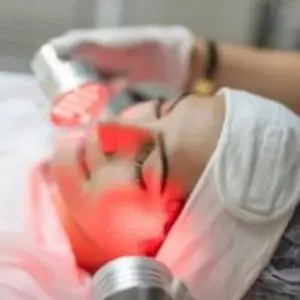Infrared lights are found in a variety of different settings and applications. Here are just a few examples of occupations that use this type of light on a regular basis.
What are infrared lights?
Infrared lights are a type of energy on the electromagnetic spectrum that we feel as heat. They have a longer wavelength than visible light, making them invisible to the human eye. Sunlight is the most familiar example of this phenomenon — we can’t see infrared light, but we can feel its warmth on our skin.
While we can’t see infrared light, certain animals can. Animals like snakes and bees have cells in their eyes that allow them to see this type of light, which helps them to find prey or avoid predators.
Jobs that use infrared lights
Infrared lights are often used in industrial and commercial settings for a variety of purposes, including:
- Heating: Infrared heaters work by heating objects directly, without having to heat the air around them first. This makes them very efficient and they can be used for a variety of different purposes, including warming people in cold weather, drying paint or food, and soldering electronic components.
- Cooking: Infrared grills cook food very quickly and evenly by Directed infrared radiation which heats food directly without having to heat the air around it.
- Medical: Infrared lamps are sometimes used in physical therapy to relieve muscle pain. They can also be used to measure someone’s blood flow or to treat certain skin conditions.
- Police and military: Infrared LEDs are often used in night vision goggles which allow people to see in the dark. They can also be used in laser sights which help people aiming guns to hit their target more accurately.
- Astronomy: Telescope cameras often use sensors that are sensitive to infrared light in order to take images of distant objects in space.
Far infrared lights are also used in some medical applications, like physical therapy or pain relief. There are also special cameras that can detect infrared light, and these cameras are often used in security or surveillance applications.
What are the benefits of using infrared lights?
There are many benefits of using infrared lights, including the following:
- Infrared light can penetrate deep into tissues, providing pain relief.
- It can increase blood circulation, helping to reduce inflammation.
- It can stimulate the release of endorphins, providing natural pain relief.
- It can aid in wound healing by increasing collagen production.
- It can improve skin tone and texture by reducing the appearance of wrinkles and fine lines.
- It can boost the immune system by stimulating white blood cell production.
What are some common applications for infrared lights?
Infrared lights are most commonly used in industrial and medical settings. In industrial settings, they are used for drying, curing, and heat treatment. In medical settings, they are often used in physical therapy to relieve pain.
What are some safety considerations for using infrared lights?
Different jobs will have different safety requirements, but there are some general things to keep in mind when using infrared light sources. First, it is important to be aware that infrared light can be harmful to your eyes, so it is important to wear proper eye protection. Additionally, infrared light can also cause skin irritation, so it is important to wear appropriate clothing and/or take measures to protect your skin from exposure. Finally, it is also important to be aware of the potential for fire when using infrared lights, so proper precautions should be taken to avoid any potential hazards.
How can I get started with using infrared lights?
If you want to start using infrared lights, there are a few things you need to know. First, infrared light is invisible to the human eye, so you will need a camera that can see the infrared spectrum. Many security cameras are equipped with this capability. Second, because infrared light is invisible, you will need to use a filter that allows only infrared light to pass through. This will help you avoid over-exposing your image. Finally, because infrared light is absorbed by water vapor, you will need to use a dry source of infrared light such as an LED or a halogen bulb.
Are there any other uses for infrared lights that I should know about?
Yes, there are many other potential uses for infrared lights that you may not be aware of. Here are just a few examples:
- Thermal imaging cameras use infrared technology to create heat maps that can be used for a variety of purposes, such as detecting energy losses in buildings or problems with electrical wiring.
- Infrared lights can be used for night vision, either by themselves or in conjunction with traditional cameras.
- Some security cameras use infrared technology to provide enhanced protection in low-light conditions.
- Some automotive headlight systems use infrared lights to improve visibility in foggy conditions.
Where can I learn more about infrared lights?
There are a few different ways that you can learn more about infrared lights. You can either research online, talk to an expert, or take a course. Researching online is a good way to get started, as you can quickly learn the basics about how infrared light works. You can also find out about the different types of infrared lights and what they are used for.
Talking to an expert is another good option, as they will be able to give you more specific information about infrared lights. They will also be able to answer any questions that you have.
In Closing
Infrared light can be used to dry or cure paint, ink, or adhesives, weld plastics, and heat food. These along with other applications makes it a practical tool for many types of jobs.
NEXT UP: Does Infrared Light Damage Skin?

